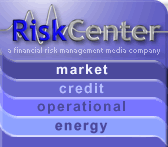The Countdown to September 18
Location: New York
Author:
Lenny Broytman
Date: Wednesday, September 12, 2007
According to Barrons.com, the Organization for Economic Cooperation and Development (OECD) has said that the “downside risks have become more ominous” for both Europe and the US alike.
Meanwhile, the US central bank has maintained that a cut in target rate for federal funds may not be as likely as some might think, leaving many in the industry to bank on the rate remaining at 5.25 percent. Although the OECD has said that “there may be a case” for a quarter-point reduction on September 18, they gave absolutely no indication that this would be a certainty. Nevertheless, many industry insiders are expecting the rate to slide down to five percent when Bernanke and his colleagues make their decision.
Elsewhere, the London interbank offered rate, Libor, has been on the rise, climbing all the way to 5.72 percent for three-month dollar loans. The figure is in fact the highest that it has been since January 2001. Furthermore, the yield on the two-year Treasury note plummeted, clocking in at a little over four percent. This is a far cry from the September 2005 figure, which saw the funds rate target at only 3.50 percent.
Barrons.com explains that unlike interbank lending, most Treasuries are often free of credit risk. The article also says that while Libor is contingent on rates from the world’s largest banks, many in the market often call for a premium when it comes to lending past overnight. In addition to all of this, the practice of “tiering” has also made its way back to the money market when both Barclays and Credit Suisse posted three-month rates of 5.8 percent. The figure, according to the British Bankers’ Association, was listed as eight basis points above Libor.
It was further reported that Libor will determine the rate on billions of dollars’ worth of American adjustable-rate mortgages.
In the Jackson Hole, Wyoming speech heard ‘round the financial world, Federal Reserve Chairman Ben Bernanke said that the Fed is taking a very close look at the effect of financial-markets developments on the economy. Some of those effects are becoming a lot more visible with national home sales collapsing 12.2 percent in the month of July.
One of the other key factors in all of this is the August unemployment numbers. After dozens of months of continuous increases, the 41,000 increase estimate was blown away when the figure was reported to be negative 4,000.
For now, the financial world awaits September 18… a day that could very well make or break many expectations some may have for the future of the credit market.

To subscribe or visit go to: http://www.riskcenter.com